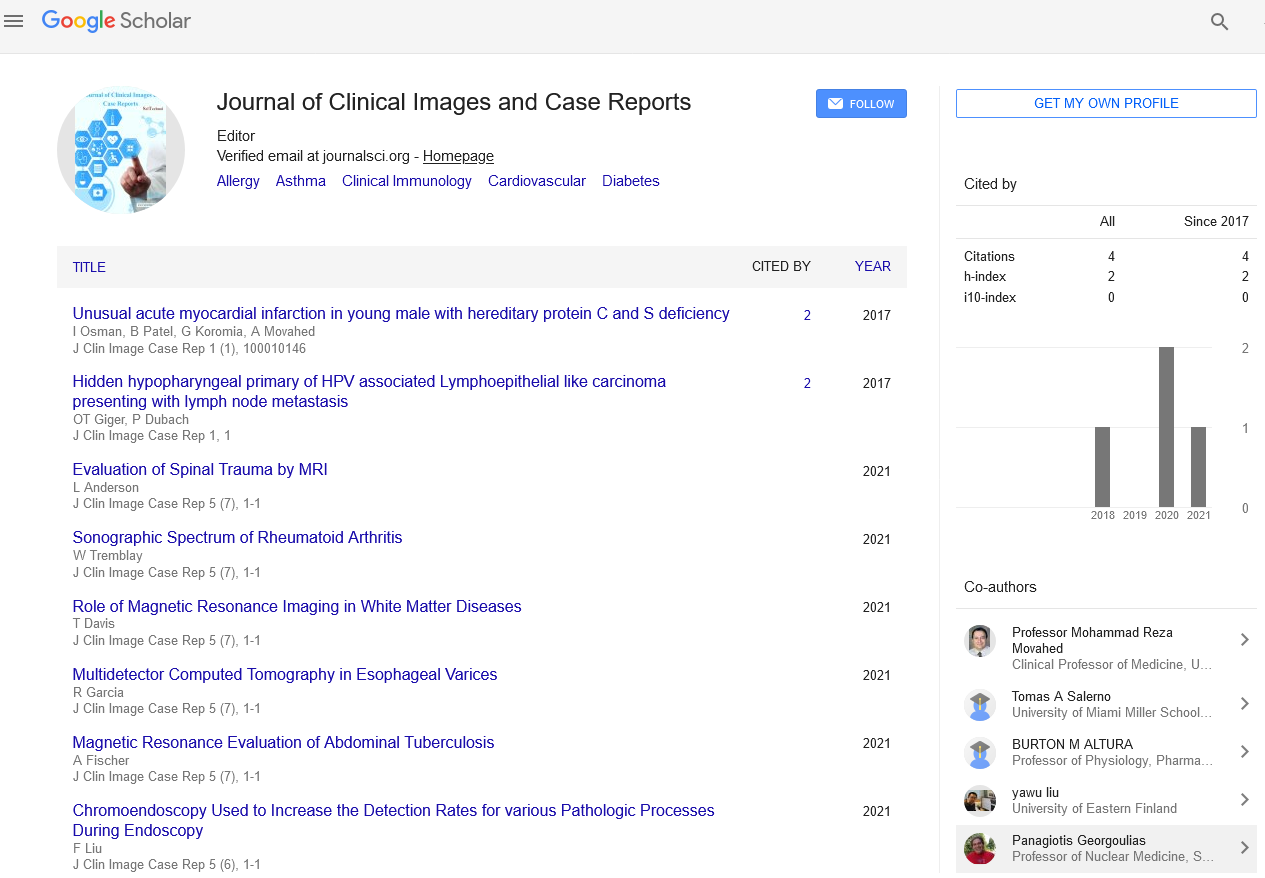Editorial, J Clin Image Case Rep Vol: 5 Issue: 5
Brain Abscess: A Brief Overview
Biswadev Bishayi
Department of Physiology, Immunology Laboratory, University of Calcutta, University Colleges of Science, and Technology, Calcutta, West Bengal, India
*Corresponding author: Biswadev Bishayi, Department of Physiology, Immunology Laboratory, University of Calcutta, University Colleges of Science, and Technology, Calcutta, West Bengal, India, Email: bishayi@gmail.com
Citation: Bishavi B (2021) Brain Abscess: A Brief Overview. J Clin Image Case Rep 5:(5) 161
Received: May 07, 2021 Accepted: May 21, 2021 Published: May 28, 2021
Keywords: Abscess, Brain, Neurosurgery,
Introduction
Viruses, bacteria, fungi, and, on rare occasions, protozoa or parasites may cause brain infections.Viruses like herpes simplex, herpes zoster, cytomegalovirus, and West Nile virus are the most common causes of encephalitis.The brachial plexus is also affected by infections such as progressive multifocal leukoencephalopathy (caused by the JC virus) and subacute sclerosing panencephalitis (caused by the measles virus). Encephalitis may be confused with a variety of non-infectious diseases. Anti-NMDA (N-methyl-d-aspartate) receptor encephalitis, for example, is an autoimmune disease characterised by an assault on neuronal membrane proteins.Infections of the brain also spread to other areas of the central nervous system, including the spinal cord. Infections can cause inflammation of the meninges (meningitis). Bacterial meningitis also spreads to the brain, causing encephalitis and mostly infecting the brain parenchyma. Meningitis is often caused by viral infections that cause encephalitis.
Etiology of brain Abscess
Infections in the brain can spread directly to other parts of the body (eg, osteomyelitis, mastoiditis, sinusitis, subdural empyema) Head wounds that pierce the skull (including neurosurgical procedures) Spread of hematogenous disease (eg, in bacterial endocarditis, congenital heart disease with right-to-left shunt, or IV drug abuse) causes that are unknown. Bacteroides and anaerobic and microaerophilic streptococci are among the bacteria involved, which are normally anaerobic and sometimes mixed. After cranial trauma, neurosurgery, or endocarditis, staphylococci are normal. In recurrent ear infections, Enterobacteriaceae can be isolated [1]. Protozoa (e.g., Aspergillus niger) and fungi (e.g., Aspergillus niger) (eg, Toxoplasma gondii, particularly in HIV-infected patients) can cause brain abscess.
Symptoms of Brain Abscess
Increased intracranial pressure and mass impact cause symptoms. Headache, nausea, vomiting, lethargy, seizures, personality changes, papilledema and focal neurologic deficits typically progress over days to weeks; however, these symptoms can be subtle or absent until late in the clinical course in some patients [2]. Fever, chills, and leukocytes.
Diagnosis of Brain Abscess
Contrast-enhanced MRI or contrast-enhanced CT if MRI is not available.Where signs indicate an abscess, a contrast-enhanced MRI with diffusion-weighted images is performed, or a contrast-enhanced CT is performed if an MRI is not present. A completely formed abscess occurs as an edematous mass with ring enhancement that can be difficult to differentiate from a brain tumour or infarction; CT-guided aspiration, culture, and drainage are all recommended.The abscess can be treated with targeted antibiotics by culturing pus aspirated from the abscess. Antibiotics, on the other hand, should not be delayed until culture results are visible.Lumbar puncture is not performed because it can induce transtentorial herniation and the results in the cerebrospinal fluid (CSF) are nonspecific (see table Cerebrospinal Fluid Abnormalities in Various Disorders).
Treatment
Antibiotics are drugs that are used to treat infections (initially cefotaxime or ceftriaxone plus metronidazole for Bacteroides species or plus vancomycin for Staphylococcus aureus based on suspicion, then as guided by culture and susceptibility testing) Surgical drainage, CT-guided stereotactic aspiration usually used. Corticosteroids, anti-seizure medications, or both are also used. Antibiotics are provided to all patients for a minimum of 4 to 8 weeks. Each of the following antibiotics is used as an initial empiric antibiotic:
2 g IV cefotaxime every 4 hours
Per 12 hours, 2 g ceftriaxone IV
 Spanish
Spanish  Chinese
Chinese  Russian
Russian  German
German  French
French  Japanese
Japanese  Portuguese
Portuguese  Hindi
Hindi 